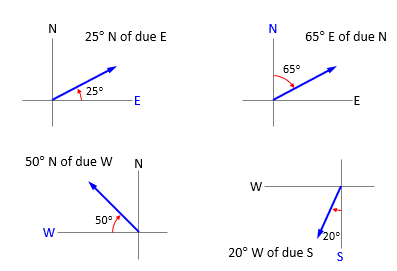(8) Linear Kinematics
1/36
There's no tags or description
Looks like no tags are added yet.
Name | Mastery | Learn | Test | Matching | Spaced |
|---|
No study sessions yet.
37 Terms
Kinematic quantities
Linear Position
Linear Distance and Displacement
Linear speed and velocity
average vs instantaneous
Linear acceleration
Vector and Scalar
Tip to tail method (adding multiple vectors)
Vector Resolution and Composition (how to utilize vectors)
Component method
Linear Position
Linear location of object of interest at a given instant
Vector: Magnitude + Direction
Coordinates: r= [x, y] (r is the position vector)
Unit: m (meter)
![<ul><li><p>Linear location of object of interest at a given instant </p></li><li><p>Vector: Magnitude + Direction</p></li><li><p>Coordinates: <strong>r</strong>= [x, y] (r is the position vector)</p></li><li><p>Unit: m (meter)</p></li></ul><p></p>](https://knowt-user-attachments.s3.amazonaws.com/163cb788-5ddb-4392-822b-ed2b0702999e.png)

Linear Distance
length of the path
how long/far
Scalar: Magnitude only
Unit: M
Linear Displacement
change in linear position
net effect of motion
Vector
Unit: m
d= delta r= r2 — r1 = [x2 - x1, y2 - y1]
![<ul><li><p>change in linear position </p><ul><li><p>net effect of motion</p></li></ul></li><li><p>Vector</p></li><li><p>Unit: m </p></li></ul><p><strong>d=</strong> delta <strong>r= r<sub>2 </sub>— r<sub>1 </sub> = [x<sub>2</sub> - x<sub>1</sub>, y<sub>2</sub> - y<sub>1</sub>] </strong></p><p></p>](https://knowt-user-attachments.s3.amazonaws.com/b17fcf12-cf62-4e2d-a632-3f9e231cb0f1.png)
Tip to tail method- Purpose
used in vector ADDITION
to find the resultant(sum/net)
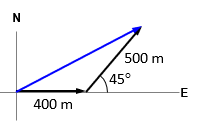
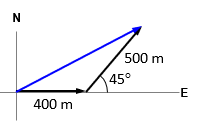
tip to tail- procedure
connect all vectors tip to tail
resultant(sum or net): the vector from the tail of the first vector to the tip of the last vector
connection sequence is not important
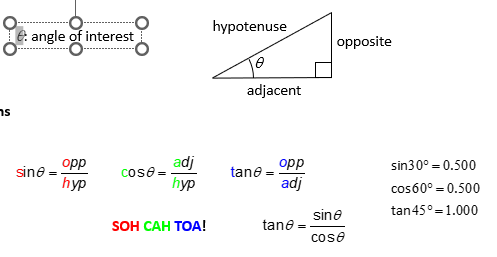
Basic Trigonometric functions
Right triangle- hypotenuse, opposite leg, adjacent leg, theta is the angle of interest
Basic trig functions
sine (theta)= opposite/hypotenuse
cosine(theta)= adjacent/hypotenuse
tangent(theta)= opposite/adjacent or sin/cos

Vector resolution (decomposition)
Breaking down a vector into components
v=vx+vy
use hypotenuse and angle to find length of opposite and adjacent legs
adj=hyp*cos(angle)
opp=hyp*sin(angle)
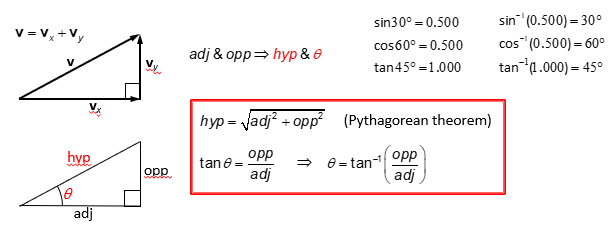
Vector Composition
composing a vector from components
v=vx+vy
use adj and opp to find hyp and angle
use Pythagorean theorem to find hyp
use arctan(opp/adj) to find theta
Directions relative to the cardinal directions
Reminder- the direction after Due is the side it starts on
